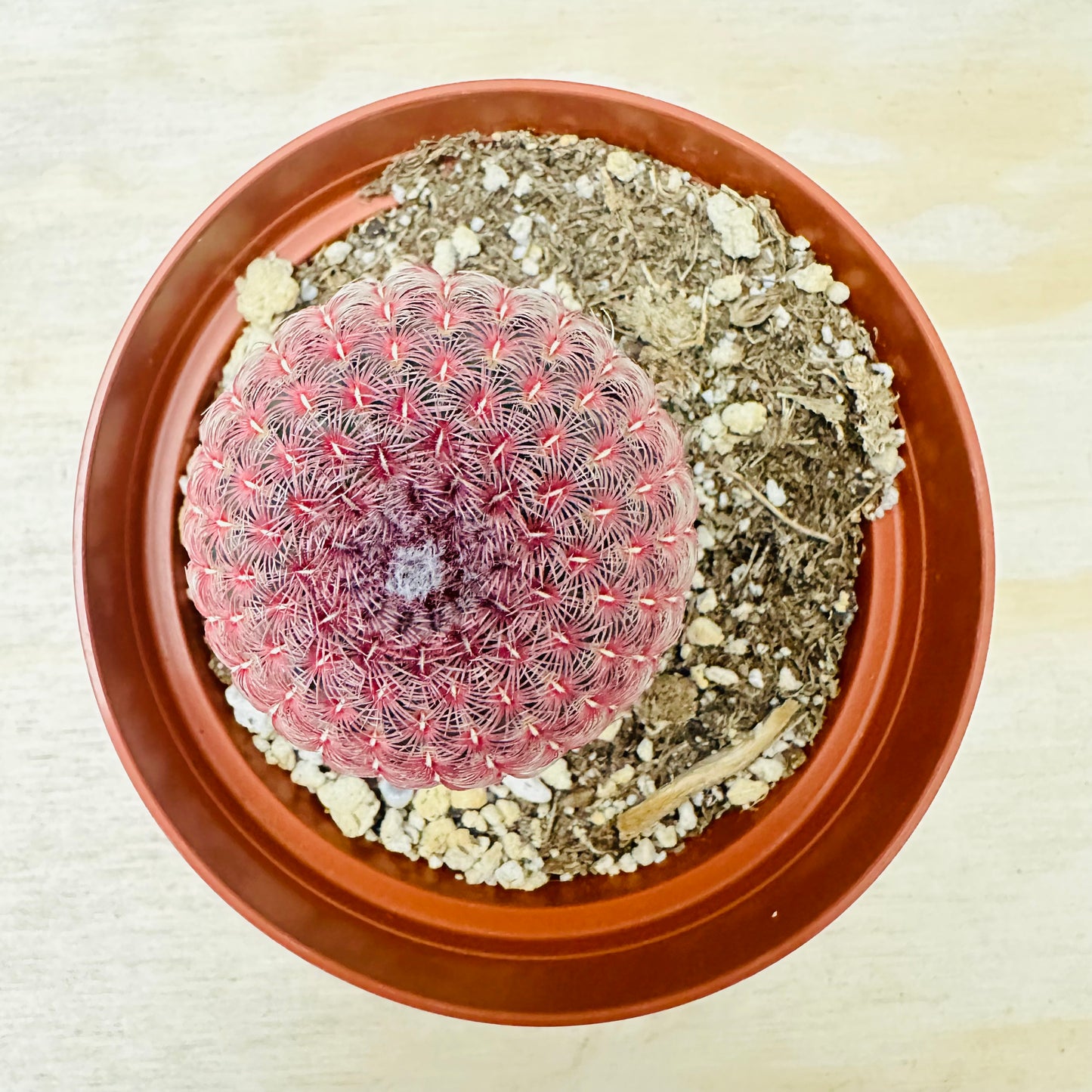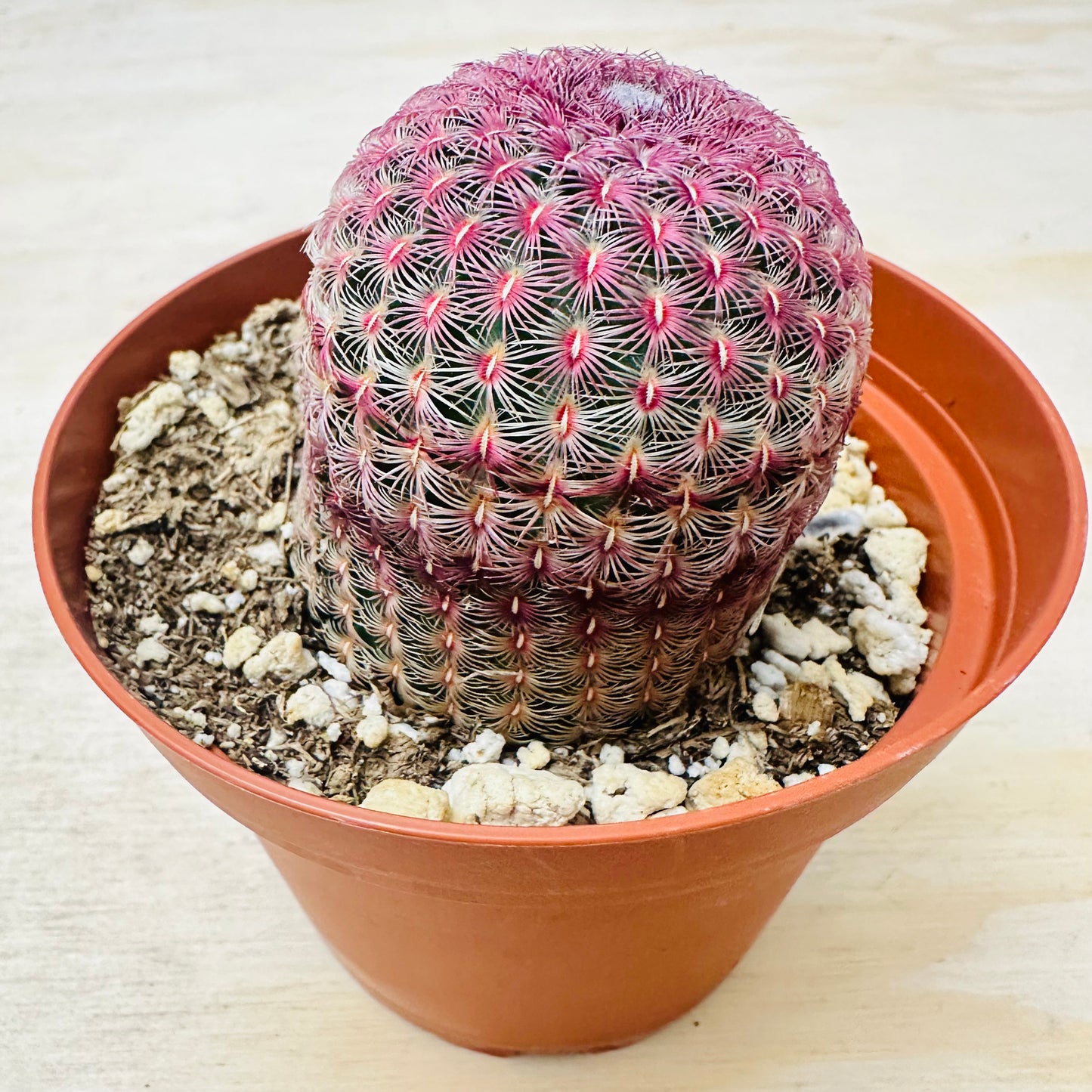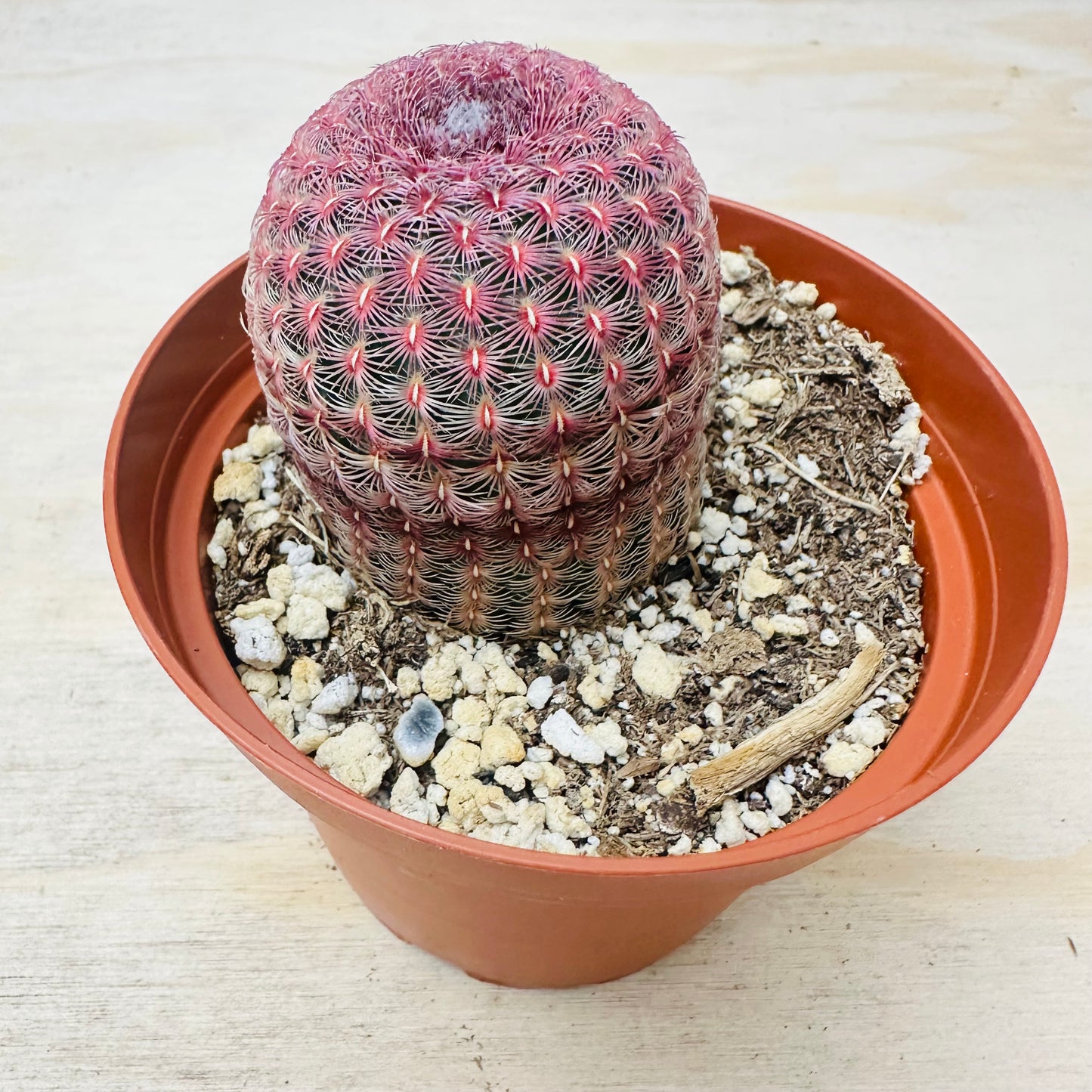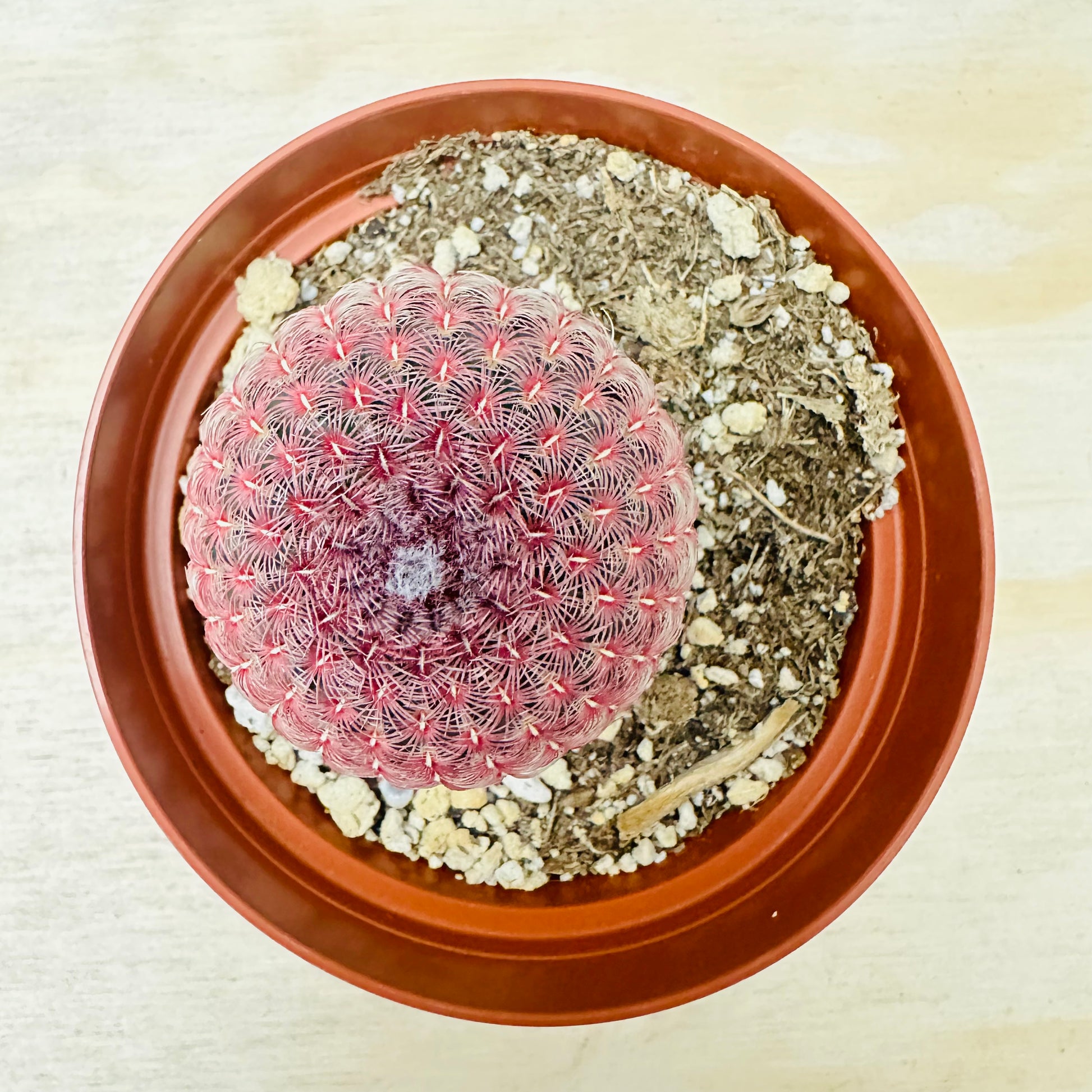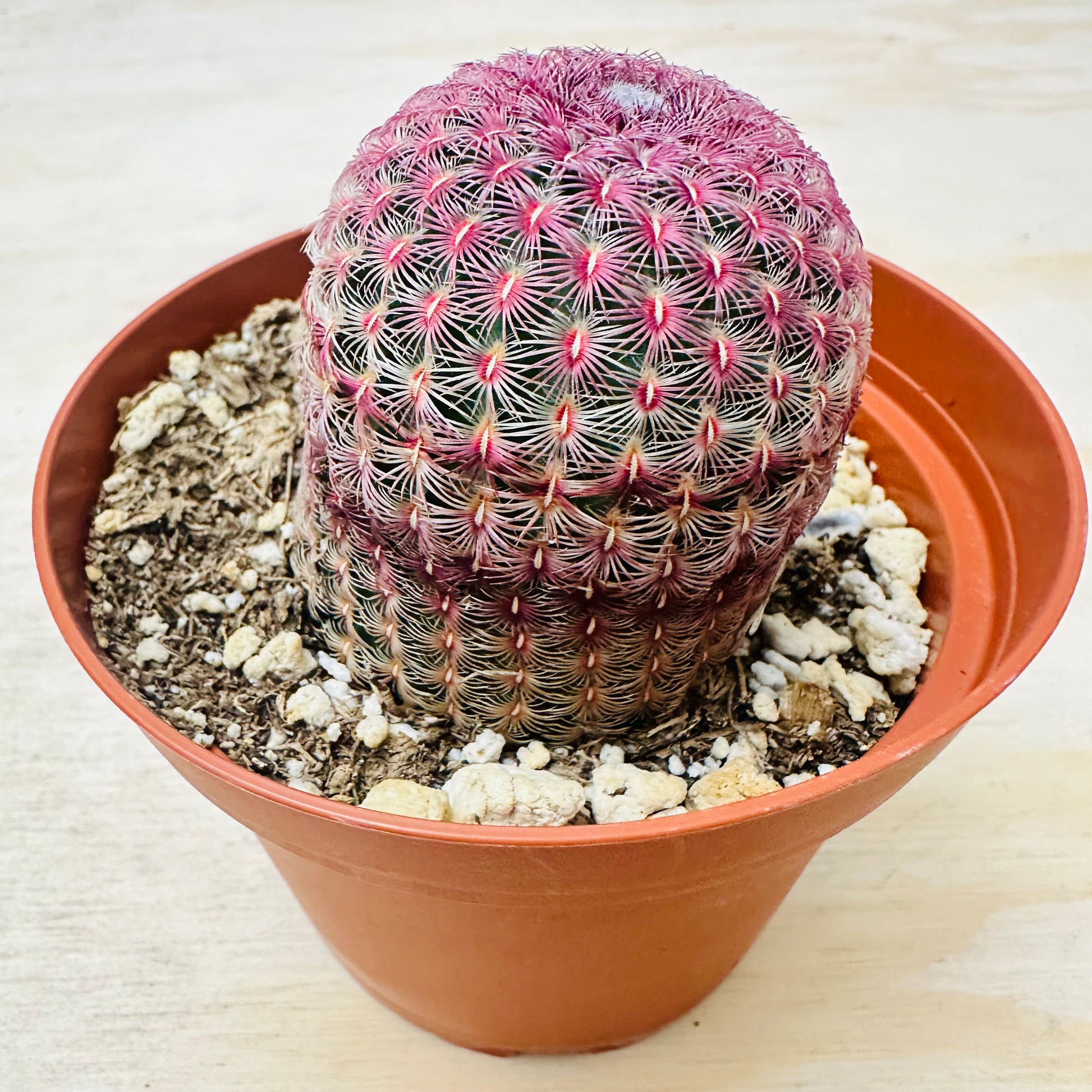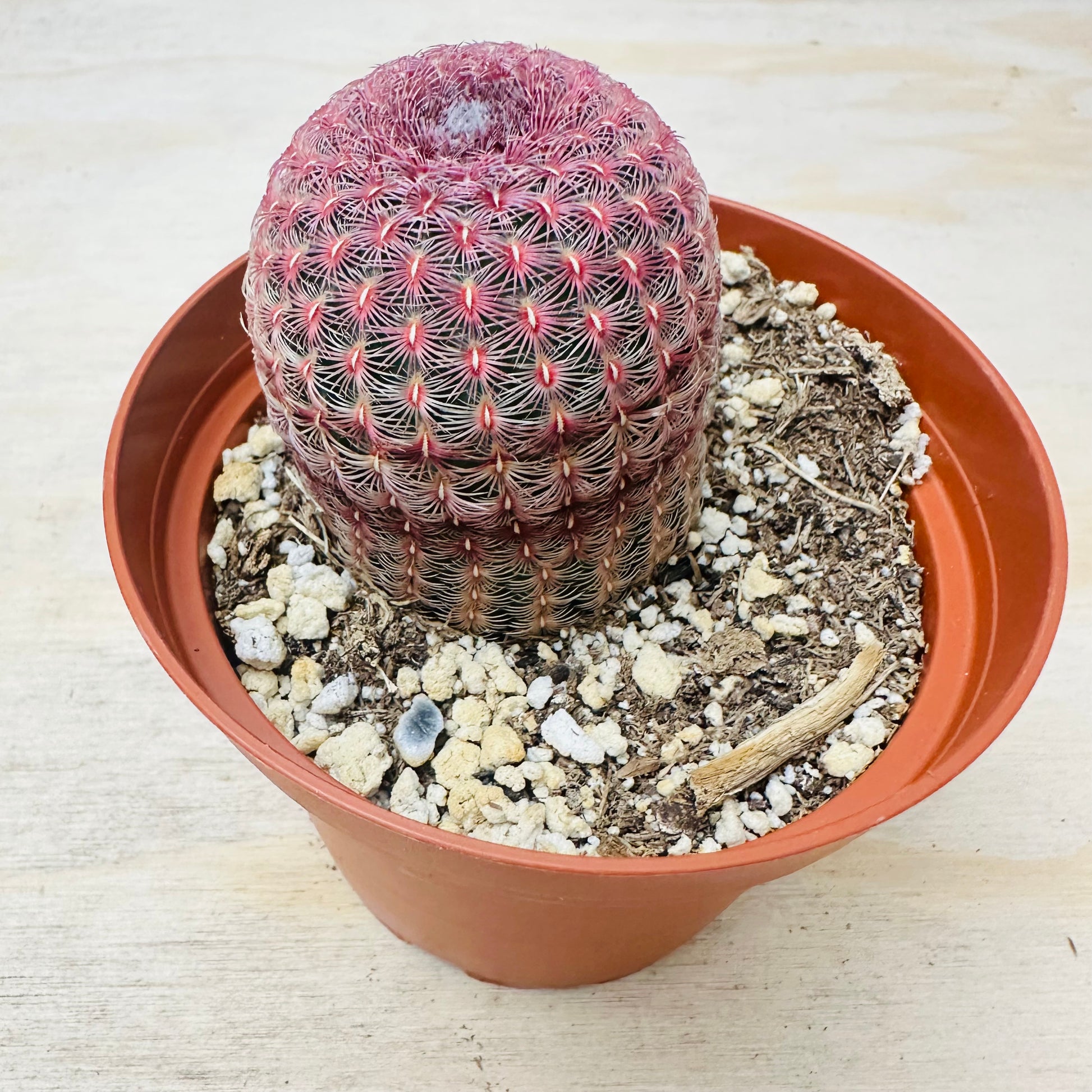Rainbow Hedgehog Cactus - Echinocereus rigidissimus 'Rubispinus'
Rainbow Hedgehog Cactus - Echinocereus rigidissimus 'Rubispinus'
In stock
Couldn't load pickup availability
📝 Description
Morphological Characteristics
Echinocereus rigidissimus ‘Rubispinus’, commonly known as the Rainbow Hedgehog Cactus, is a vibrant and eye-catching cultivar of the Echinocereus genus, native to northern Mexico and the southwestern United States. Belonging to the Cactaceae family, this cactus is celebrated for its strikingly colorful spines and symmetrical form.
The plant forms a solitary, cylindrical stem that typically reaches 10–20 cm (4–8 inches) in height and 5–8 cm (2–3 inches) in diameter. Unlike clustering varieties, Rubispinus rarely offsets, making each plant a distinct centerpiece. Its most notable feature is its densely arranged, vividly colored spines, which range from bright magenta to deep rose with alternating bands of white or pale yellow, giving the cactus a striped or “rainbow” appearance.
The stem is ribbed, with vertical ridges topped by closely spaced areoles. These areoles bear short, stiff radial spines and slightly longer central spines, none of which are dangerously sharp, making the plant relatively safe to handle. In spring to early summer, mature plants may produce brilliant pink to magenta flowers, 5–8 cm (2–3 inches) wide, often emerging from the upper areoles and adding to the cactus’s ornamental appeal.
Growth Habits
The Rainbow Hedgehog Cactus is a slow-growing, non-clumping cactus, forming a single upright column over many years. It maintains a compact and tidy shape, making it perfect for windowsills, rock gardens, or collector containers. Though solitary, its intense coloration provides a powerful visual impact even as a stand-alone specimen.
Maintenance Points
• Lighting: Thrives in full sun to bright direct light. Indoors, place near a south- or west-facing window to ensure sufficient light exposure and maintain vibrant spine coloration.
• Watering: Water sparingly, allowing the soil to dry completely between waterings. During winter dormancy, reduce watering to prevent rot. Never let the plant sit in water.
• Soil: Requires a well-draining cactus mix. Amend standard potting soil with perlite, coarse sand, or pumice to ensure proper drainage.
• Temperature: Ideal temperature range is 15–30°C (59–86°F). It can tolerate brief drops to -6°C (20°F) if kept dry but should be protected from prolonged cold and frost.
• Fertilization: Feed once a month in spring and summer with a low-nitrogen cactus fertilizer, diluted to half strength. No fertilization is needed during fall and winter.
• Potting: Use pots with drainage holes. Repot every 2–3 years to refresh the soil and provide growing space, preferably during spring.
• Humidity: Prefers low humidity environments. Ensure good air circulation and avoid misting, as excess moisture can lead to rot.
Reproduction Method
1. Seeds:
• Sowing: Rubispinus is primarily propagated by seed. Use fresh seeds on the surface of a well-draining, sterile cactus seed mix.
• Germination: Maintain temperatures between 20–25°C (68–77°F). Keep lightly moist and in bright indirect light with high humidity.
• Transplanting: Once seedlings are established with a few small spines, transplant into individual containers with cactus soil.
2. Grafting (optional):
Although uncommon, some growers graft Rubispinus onto faster-growing rootstocks to speed up growth or rescue weak seedlings.
Additional Tips
• Pest Control: Watch for mealybugs, scale, and spider mites. Use neem oil or insecticidal soap for treatment.
• Disease Prevention: Prevent root rot by avoiding excess moisture and using well-drained soil.
• Pruning: Not typically needed, but remove any shriveled flower remnants with sterile tweezers if desired.
• Display: Looks stunning in minimalist pots, terracotta planters, or surrounded by white gravel to highlight its vibrant spines.
• Safety Note: Spines are not dangerously sharp, but minor irritation can occur. Handle gently or with gloves.
With its stunning coloration, tidy form, and minimal care needs, Echinocereus rigidissimus ‘Rubispinus’ is a standout addition to any cactus or succulent collection. Whether grown indoors under bright light or as part of an outdoor display in arid climates, it brings an irresistible pop of color and charm.
🌿 Care Tips
Plant Care
Light
Water
Soil
Temperature
🌟 Note: It’s normal for succulents to appear slightly shriveled after shipping. They usually recover within a few days in a suitable environment.
📦 Shipping Info
Seah Shipping Policy
Effective Date: November 2025
This Shipping Policy applies to orders delivered within the continental United States (the lower 48 states). By purchasing from Seah, you agree to the terms below.
1) Shipping Cost & Free Shipping
- Automatic rate calculation: Shipping is calculated at checkout based on weight, destination ZIP and carrier rates.
- Free Standard Shipping: Orders $59+ (pre-tax, after discounts) ship free to the lower 48 states.
- Alaska, Hawaii, Puerto Rico & other territories: Not eligible for free shipping or standard flat offers at this time.
- Taxes/Duties: Applicable sales tax and any fees are shown at checkout.
2) Processing Schedule
- Business days only: We process and ship Monday–Friday. No shipping on weekends or U.S. federal holidays.
- Handling time: 1–3 business days after payment confirmation.
- Cut-off time: Orders placed before 3:00 PM (PST) are prioritized for same-day processing; others roll to the next business day.
- Changes/Cancellations: Email support@seah.co within 12 hours of purchase; after that, the order may already be in processing.
3) Transit Times
| Method | Estimated Transit | Total ETA (Handling + Transit) |
|---|---|---|
| Standard | 5–8 business days | 6–11 business days |
| Express | 3–4 business days | 4–7 business days |
ETAs are estimates. Weather, holidays, carrier delays or high-volume periods may extend delivery times.
4) Seasonal Temperature & Plant Safety
- Winter (Nov–Mar): We strongly recommend adding a heat pack at checkout to protect plants from freezing. Orders shipped without a heat pack during cold conditions are not covered for cold damage.
- Summer heat: During extreme heat waves, we may hold shipments until temperatures normalize. We’ll notify you if there’s a hold.
- Packaging: Plants are carefully packed (bare-root or potted by type/size) to minimize transit stress.
5) Carriers & Tracking
- We ship via USPS / UPS / FedEx, selected automatically for best service to your address.
- When your order ships, you’ll receive a tracking email. Tracking typically activates within 24 hours.
- If you haven’t received tracking within 3 business days, contact us at support@seah.co or +1 (626)-999-1314.
6) Address Changes & Delivery Issues
- Before shipment: Request address changes within 12 hours of ordering.
- After shipment: We can’t modify the address once dispatched. Please contact the carrier for redirection options.
- PO Boxes: Supported for USPS only; UPS/FedEx require a street address.
- Seah isn’t responsible for delays or loss due to incorrect addresses provided at checkout.
7) Service Area
We currently ship to the continental U.S. (lower 48 states). Orders to AK/HI/PR and other territories are not eligible for free shipping and may be restricted.
8) Support
- Hours: Mon–Fri, 9:00 AM – 5:00 PM (PST)
- Phone: +1 (626)-999-1314
- Email: support@seah.co
- Address: 7870 Margaux Pl, Rancho Cucamonga, CA 91739, United States
Thank you for supporting our California nursery—each plant is hand-selected and packed with care. 🌱
